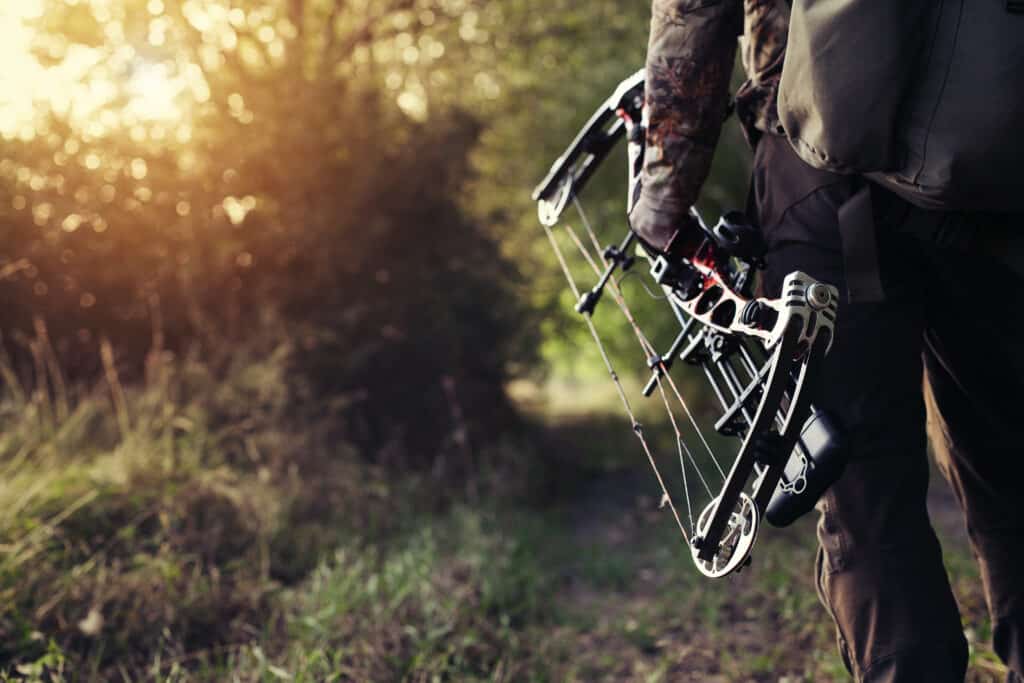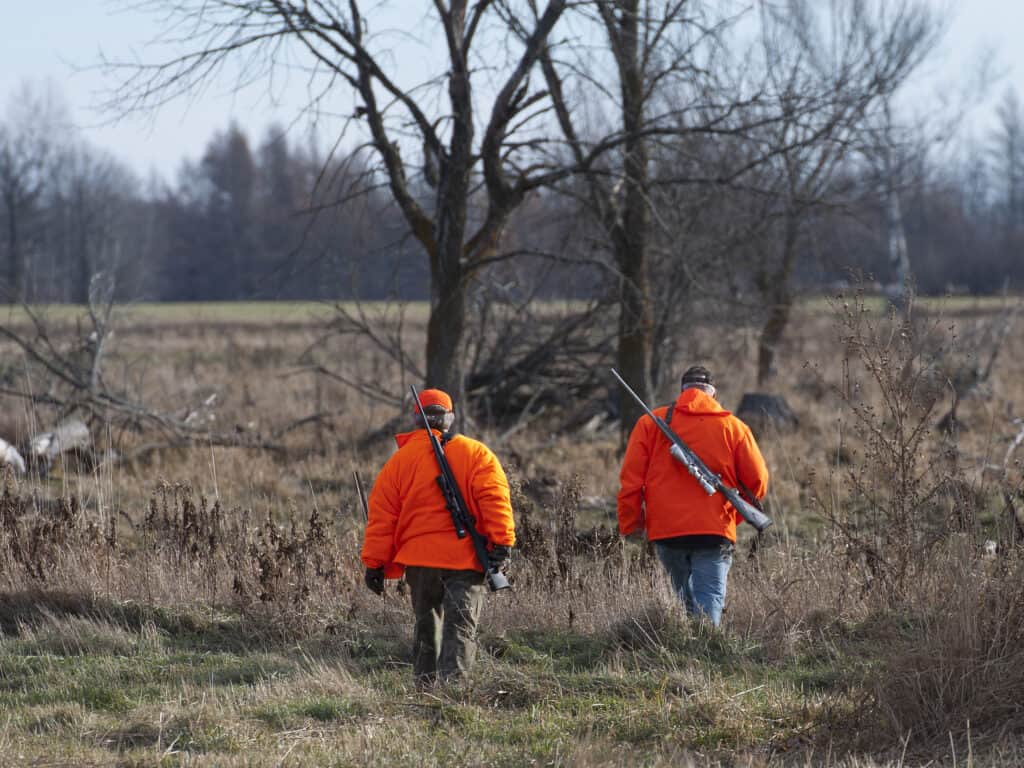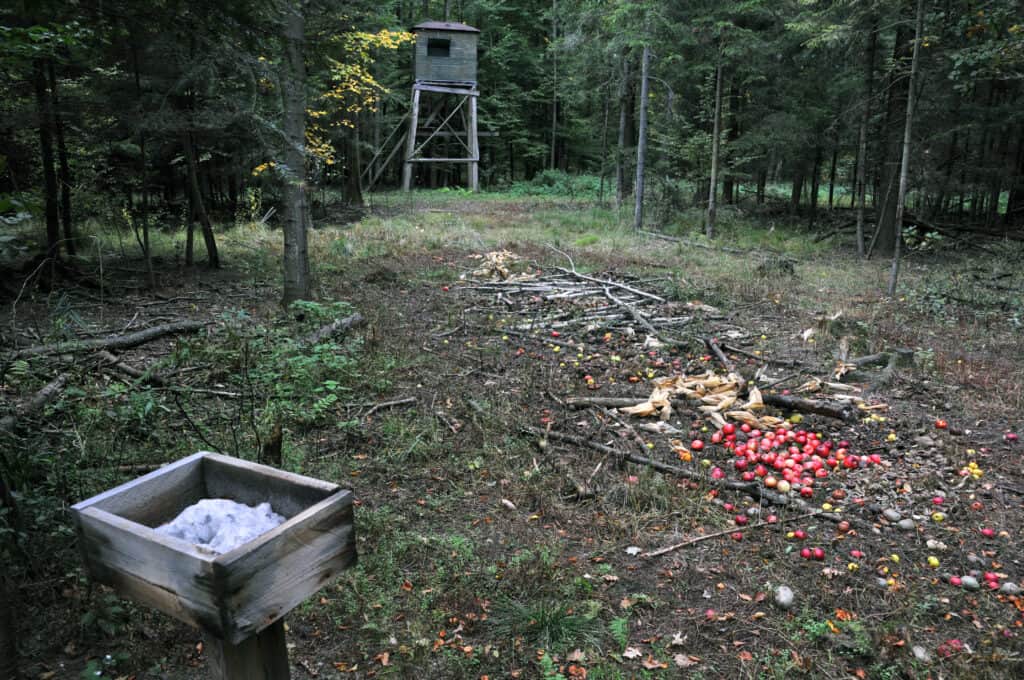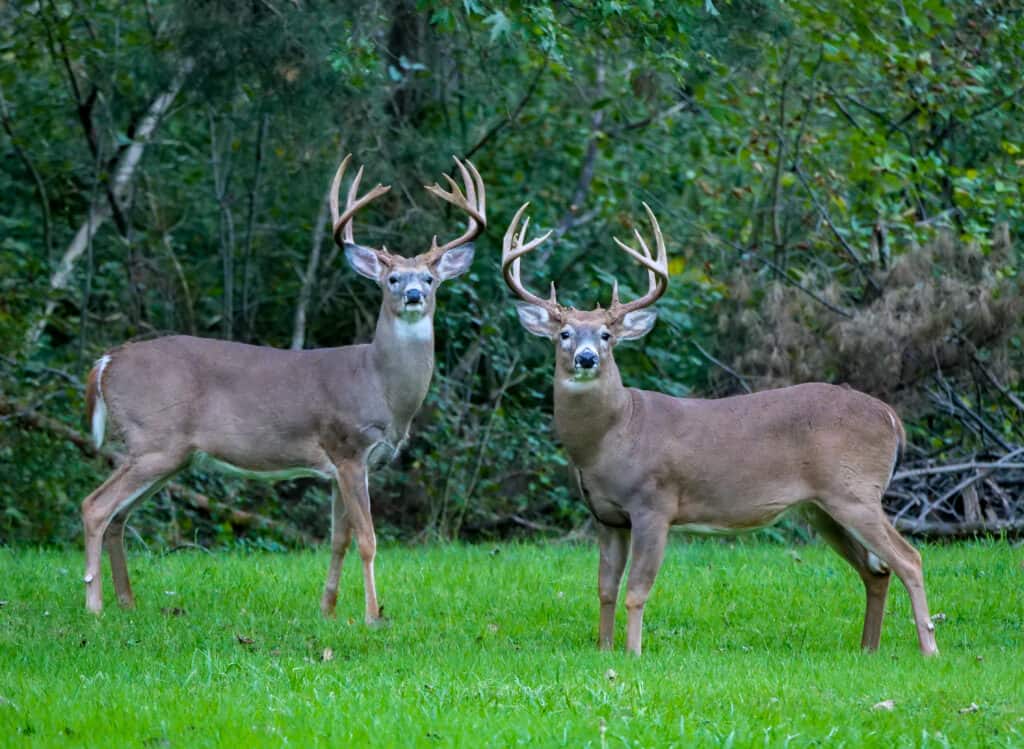Wisconsin is home to abundant white-tailed deer herds and some of the country’s largest bucks. The state provides over seven million acres of land for public hunting, making it one of the best states to hunt in. This land covers many different habitats, from agricultural lands to dense forests.
However, hunting in Wisconsin isn’t a free-for-all. Instead, you’re only allowed to hunt with the correct license. You must also follow certain regulations and rules when hunting, which helps ensure that everyone gets a chance to participate.
Below, we’ll look at the season dates for the Wisconsin hunting season, as well as some vital hunting regulations.
Wisconsin Hunting Licenses

Licenses can be purchased easily online. The state has an online portal that handles all purchases. Alternatively, you can purchase a license at a supplier.
©ZoranOrcik/Shutterstock.com
There are several different types of hunting licenses, depending on the exact weapon you want to hunt with. For instance, there is a gun deer license, archery license, and crossbow license.
First-time buyers have a much cheaper license fee than others. Junior fees are also cheaper.
Licenses can be purchased easily online. The state has an online portal that handles all purchases. Alternatively, you can purchase a license at a supplier.
If you want to use two different weapons, you can simply “upgrade” your license for another weapon type. This is cheaper than purchasing a brand new license.
Wisconsin Deer Seasons

Gun season in Wisconsin is relatively short. It usually only lasts a week in November. During this time, you can use a qualified firearm.
©Steve Oehlenschlager/Shutterstock.com
There are several deer seasons in Wisconsin. These have their own regulations and may only be open to certain people. Furthermore, only some counties have some seasons. Many are not state-wide.
Because these seasons affect how and when you can hunt, they’re important to understand. Let’s take a look below at each season.
Archery and Crossbow Season
With the proper license, you can a deer during this season. Usually, this is one of the largest seasons, starting in September and ending at the end of January. While you can usually take bucks during this season, some areas may only allow antlerless deer. be sure to take a look at your particular area’s regulations before you take to the field.
Metro areas sometimes allow archery hunts, as well. These hunts help control urban deer populations, which may prevent collisions with deer. However, these areas often have different regulations. Be sure to check before you go hunting.
Disability Hunts
Some areas have a season just for those with disabilities at the beginning of October. This is not a statewide season, though. This season does allow the use of firearms. As the name suggests, this season is only for those with disabilities.
Only some gun hunts are open during this season. Therefore, be sure that the place your license is valid has a disability hunt if you’re interested in one.
Youth Deer Hunts
Near the beginning of October, there is a youth-only hunting season. During this period, only those 15 or younger who have a deer license may hunt. However, adults are required to accompany the youth into the field. The adult may not take deer during this period, though. The adult must come even if the youth hunter has a hunter education certificate.
Hunter mentorship rules apply to youth under 11 years old, and those that have not completed the hunter education course.
Often, this season only lasts a weekend. If you have a youth hunter, be sure to take advantage of it.
Gun Season
Gun season in Wisconsin is relatively short. It usually only lasts a week in November. During this time, you can use a qualified firearm. Not all units allow this season, though. Therefore, be sure to take a look at the regulations in your area to see exactly where you can hunt with a firearm.
Of course, you must have a gun license to use a firearm during this season.
Muzzleloader Season
For two weeks at the end of November and beginning of December, you can hunt with a muzzleloader. What exactly counts as a muzzleloader is important during this season, of course. Be sure you check regulations for this weapon type before planning to hunt during this season.
December Antlerless Deer Season
In December, there is a 4-day antlerless deer season. During this time, you can use most weapon types. However, you may only take antlerless deer.
Antlerless-Only Holiday Hunt
On select farmland, there is a short season for antlerless deer only. The regulations of this hunt vary, so be sure to check your local area. For the most part, this season is open to most weapon types.
Bag Limits

There are several deer seasons in Wisconsin. These have their own regulations and may only be open to certain people.
©Michael Tatman/Shutterstock.com
All deer tags are provided with your license. The specific tag will depend on the license you purchase – and some licenses provide multiple tags. There are no drawings involved.
Buck Harvest Authorizations
Bucks authorizations are issued with gun, bow, and crossbow licenses. These can be used in any unit statewide. You may only harvest one buck with one license. You may only take deer during the season your weapon is allowed in.
These tags are not authorized during antlerless-only seasons.
A “buck” is defined as a deer with antlers. Of course, male deer without antlers would not all into this category.
Antlerless Harvest Authorizations
If you are 17 or younger, an antlerless harvest tag is provided with each license. You may take any antlerless deer statewide with one of these licenses. However, you must only use the tag during the season that the license may be used in.
You many be given antlerless authorizations as an adult. One or more may be provided depending on your selected area. Usually, only one antlerless deer is allowed per license. You must only use the weapon on your license when taking these deer. Often, these tags are specific to the area; they are not statewide.
Bonus antlerless authorizations may be purchased when available. However, you may only purchase one per person per day. You may only use these in the zone you purchased them for, and you may only use the weapon on your license.
You may request antlerless deer permits for metro areas. These are at no-cost to you, though you must have a qualifying license. You may also be able to get bonus authorizations depending on the area selected. Some of these may only be utilized on private lands, so be sure you have somewhere to hunt.
Baiting Regulations

You can only use deer bait in certain counties. Where it is legal, there are several regulations to follow.
©Ewa Rogoyska/Shutterstock.com
Baiting is allowed in Wisconsin, but there are many regulations involved. For instance, you can use scents to lure deer statewide during hunting season. However, you must deposit the scent in a way that the deer can actually get to it. Furthermore, all scents must be removed at the end of the day unless they are two ounces or less.
You may not place food plots or planting for hunting deer in state-owned lands. However, you can use natural vegetation and materials that are the result of normal agricultural activities.
You can only use deer bait in certain counties. Where it is legal, there are several regulations to follow. For instance, you may use up to 2 gallons of bait for parcels of 40 acres or less. For continuous parcels of land over 40 acres, 2 gallons may be placed for every 40 acres.
Bait can be spread out or put all in the same pile. However, you may not place bait within 100 yards of another baiting site. You can also not place bait less than 100 yards from a roadway or 50 yards from a trail or campsite. Placing deer where elk or bear are known to feed is also illegal.
The bait cannot contain any animal parts (because that would make the bait attract bears – not deer). Furthermore, it may not be deposited by an automatic feeder. It may also not contain any processed materials, such as paper, plastic, glass, or wood.
Registering and Transporting Deer
Once your deer is taken, you must register your deer right away. You can register your deer online or via phone. This must be done before 5 p.m. on the day after you take the deer. Be ready to give your harvest authorization number.
Once your deer has been registered, you will be given a confirmation number. Keep this handy to prove that you registered your deer.
You may quarter your deer to make it easier to remove it from the field. The deer must remain in at least five pieces and the head must remain attached to one of these pieces. The hide and legs (if removed) do not count as one of your pieces.
However, you can only store one deer at a time that isn’t registered and in several pieces. You may store as many intact deer as you want, though. (This is to prevent the pieces from getting mixed up.)
You must take all pieces of the deer from the field except the entrails. When the deer is in the field, it must stay intact except for field dressing and quartering.
Chronic Wasting Disease Information

Chronic Wasting Disease is caused by prions, which are mutated proteins.
©iStock.com/Ralph Navarro
This disease is a neurological condition that affects deer, elk, moose, and other cervids. It is always fatal, though it can take a few years for the deer to develop symptoms and perish. This cause of this disease is prions, which are protein mutations. These can contaminate an environment and live in the soil for a very long time.
Therefore, once the disease is in the area, it is very hard to get rid of it.
Prions are in the brain, spinal cord, lymph nodes, and spleen. However, muscles have low concentrations. Prions survive at cooking temperatures, so cooking doesn’t remove the risk of being exposed. While this condition doesn’t current affect people, the more it is exposed to people, the more likely it is to jump species.
Therefore, do not eat any deer with CWD. If you take a deer from an area with CWD, we recommend getting the deer tested (for free) before consuming it. Do not mix meat from multiple animals before you know they are all CWD-free.
You can see the CWD results from your deer online.
Currently, it is illegal to to transport whole wild deer carcasses from areas that are affected by CWD. There are exceptions to this. One option is to take the deer to another CWD-affected county adjacent to the one the deer was taken. You may take the deer straight to a taxidermist or meat processor in another county.
You must inform any professional processor you give the deer to that it is from a CWD area.
If your deer tests positive for CWD, you will get another authorization for the same kind of deer. This authorization is valid for the current hunting season and the following one.
Up Next
Sources:
- https://www.eregulations.com/wisconsin/hunting/deer-hunting-regulations
- https://www.eregulations.com/wisconsin/hunting/deer-hunting-seasons
- https://www.eregulations.com/wisconsin/hunting/licenses-fees
- https://dnr.wisconsin.gov/topic/hunt/dates
The photo featured at the top of this post is © iStock.com/Matt_Gibson
Sources
- Wisconsin Hunting, Available here: https://www.eregulations.com/wisconsin/hunting/deer-hunting-regulations
- Wisconsin Hunting, Available here: https://www.eregulations.com/wisconsin/hunting/deer-hunting-seasons
- Wisconsin Hunting, Available here: https://www.eregulations.com/wisconsin/hunting/licenses-fees
- Wisconsin Department of Natural Resources, Available here: https://dnr.wisconsin.gov/topic/hunt/dates
Thank you for reading! Have some feedback for us? Contact the AZ Animals editorial team.






